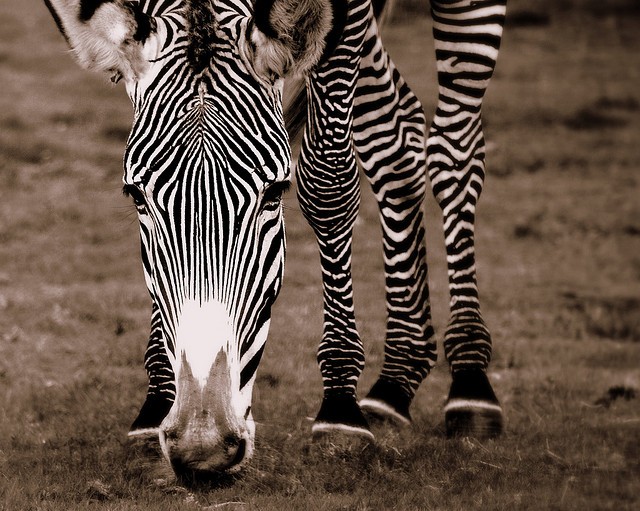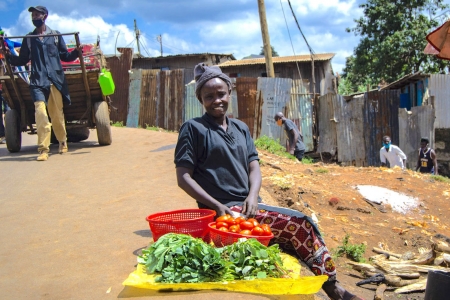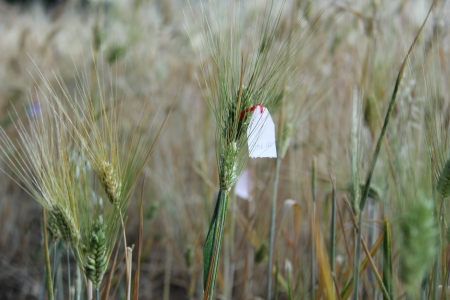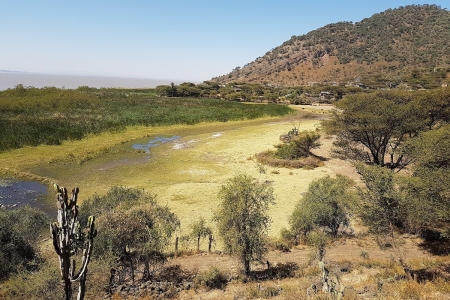My Amharic skills are basic at best but I have managed to learn the names of a few animals. Gundan means ant. In the middle of the savings and credit trainings we were conducting with farmers in Northern Ethiopia, I heard the trainer say gundan. What does an ant have to do with savings, I asked.
 Photo: Jos on Flickr
Photo: Jos on FlickrThe story, as told by the savings and credit trainer, Demeke Mekuria from Bahir Dar (translated):
In Ethiopia, we have three animals with traits that we can learn from – the zebra (yemida ahiya), ant (gundan) and giraffe (kechiney):
- A zebra’s foal can stand within only half an hour to an hour after birth.
- Ants spent most of their time storing food – and many carry more than their own weight.
- Giraffes store food when they eat in a separate part of their stomachs. When they are hungry, they tap into these reserve stores of food.
What can we learn from these three animals?
From the ant, we learn that we have to save all the time, just as ants work all the time to save. We can’t say, I will save today or I will save tomorrow or maybe I’ll start in one month or three months. We have to save regularly from whatever we get, and we have to save continuously. This is what we learn from the ant.
From the zebra’s foal, we learn that we need to learn how to save quickly, just as the calf stands quickly after birth. We have to start saving early, while we are young. If we think we will start saving when we grow up and have a lot of money, we’ll lose out. Save early: this is what we learn from a zebra.
From a giraffe, we learn that if we save money in a place where we can access it, then we can use it during difficult times. We have to put our money somewhere we can access it during emergencies. If there is a problem, this money can be a solution. The giraffe doesn’t put the food in the forest, she puts it in her stomach. If she’s hungry and she needs it, she can use it. We have to be able to save some money like this.
This is how we can learn to save.
The farmers all smiled. This was the mid-afternoon pickup. It worked well, as various participants raised their hands to share what savings skill they learned from the behaviors of ants, giraffes and zebras.
Over 75 percent of farmers in our trainings had experience taking loans either in cash or kind for farming inputs like fertilizer, seeds, etc. Many have also received savings trainings, some from the local microfinance institutes. Despite previous experience, they unanimously demonstrated interest in additional training.
Farmers were selected for this training because they took loans for irrigation technology as part of a USAID Feed the Future project. The farmers are testing the irrigation technologies on their fields and will keep them after the project finishes. Money repaid for the loans under the project will be used to provide credit for more farmers to purchase irrigation technologies.
The responses we received after the first series of savings trainings demonstrate that the need for financial literacy is quite strong. Kende Semi, a farmer from Dangila, exclaimed in the middle of our training:
Today I am 48 years old. I am inspired by your training. All my pockets were full of money. If I had such training earlier, I would have become rich. I am really touched.
Mekuria had explained to him that if he saved 20 birr per month for the last 30 years he would have more than 7,200 birr. He was impressed about the amount of savings he lost and raised a surprising question: where were you? The next morning he told us that he has opened a saving account and saved 700 birr (equivalent to USD 35). He has decided to save regularly.
At the end of our training, Yezena Dessi shared:
I learned that saving is not only in monetary terms and that it is not necessarily regular. No one has given a training as good as this one. Especially the attention given to women was appreciated. We got the chance to speak, while the men were there.
The trainer was critically important to the success of these trainings. Through the Innovation Lab for Small-Scale Irrigation (ILSSI) project’s financial literacy trainings, we hope to continue building the capacities of poor farmers to both save and repay loans for irrigation technologies.
In areas of Ethiopia where water is one of the primary constraints to crop production during the dry season, there is significant potential to scale out financing systems for irrigation technologies. Just as the ants save continuously, the revolving fund will exist continuously to ensure that the money from repaid loans is invested in irrigation technology for additional farmers.
The hope is that more farmers like Kende and Yezena will be able to take advantage of these opportunities in the future.
For more information:
Click here for information on the Innovation Lab for Small-Scale Irrigation
Check back at the end of the year or email a.waldorf(at)cgiar.org to read the full report including training materials and analysis of impact.












Comments
Great blog, loved the three animal stories, such wisdom.
Thanks, Abby, for this superb story!